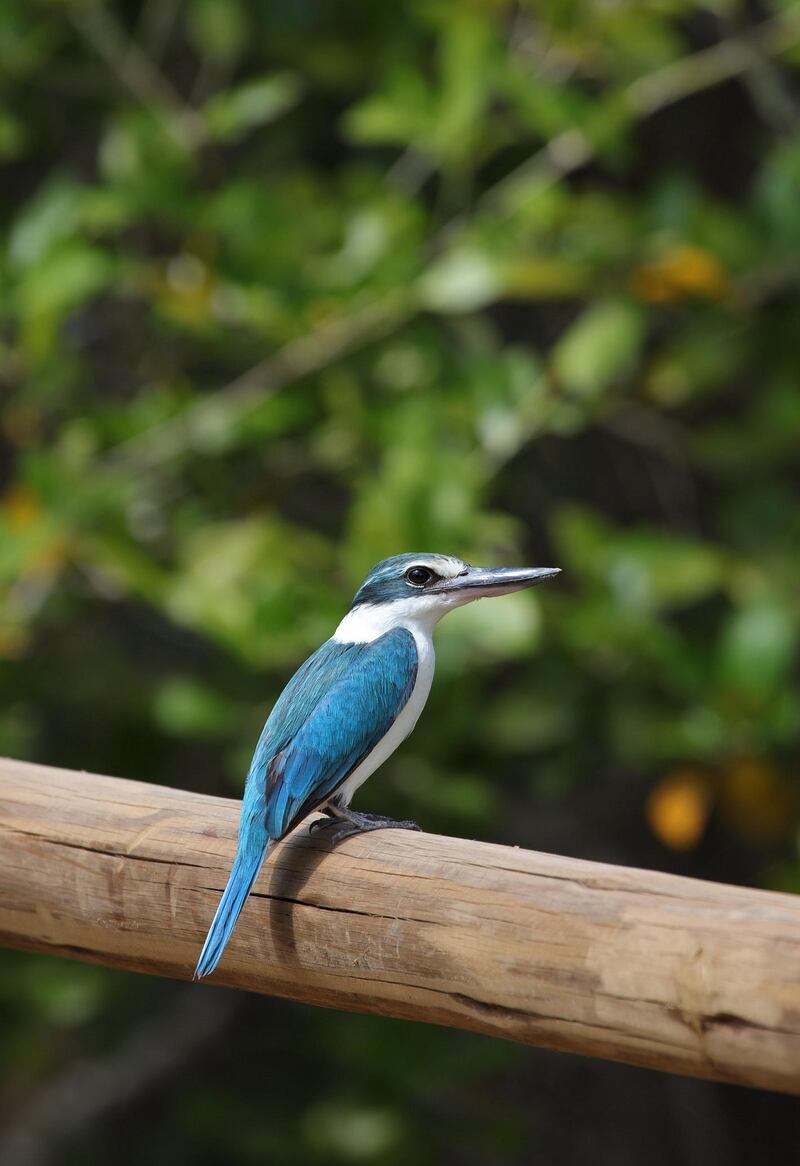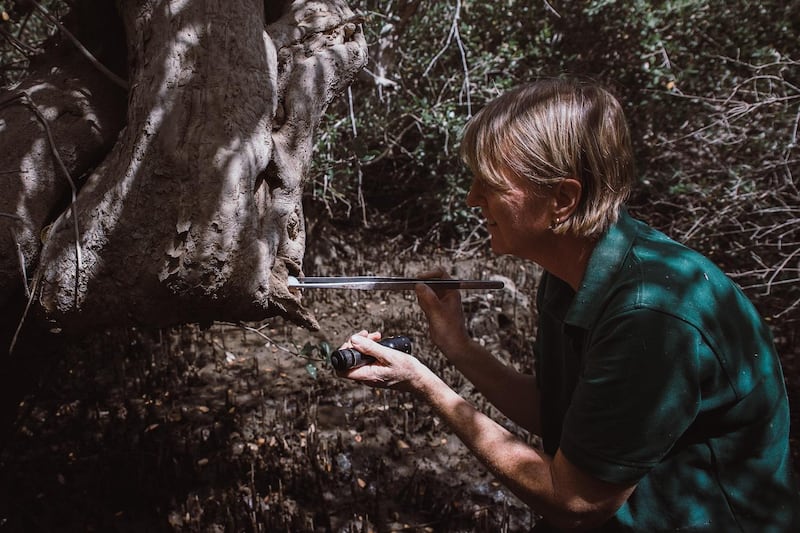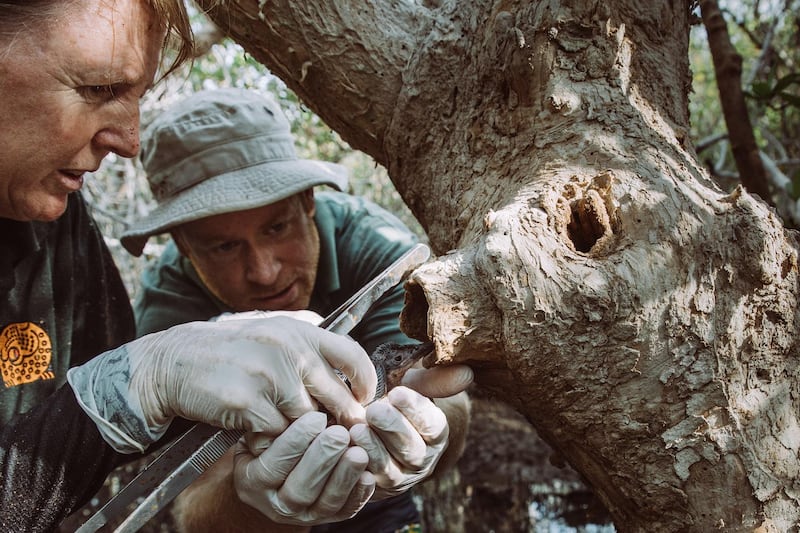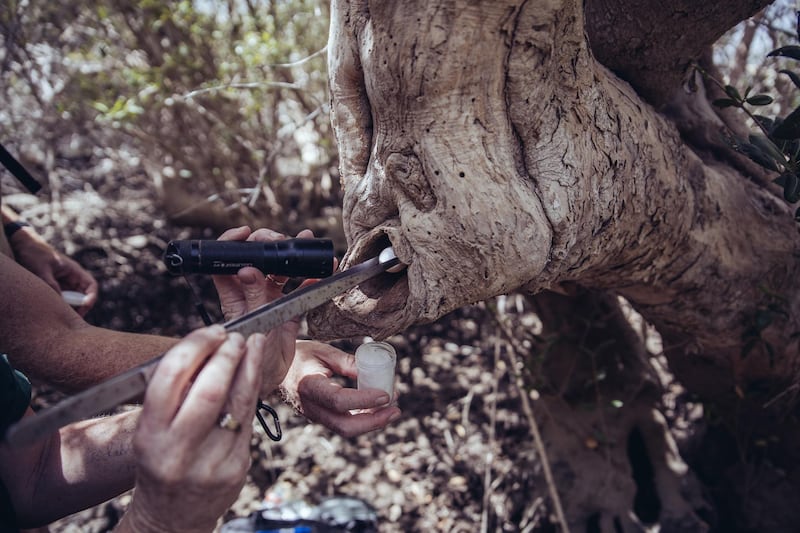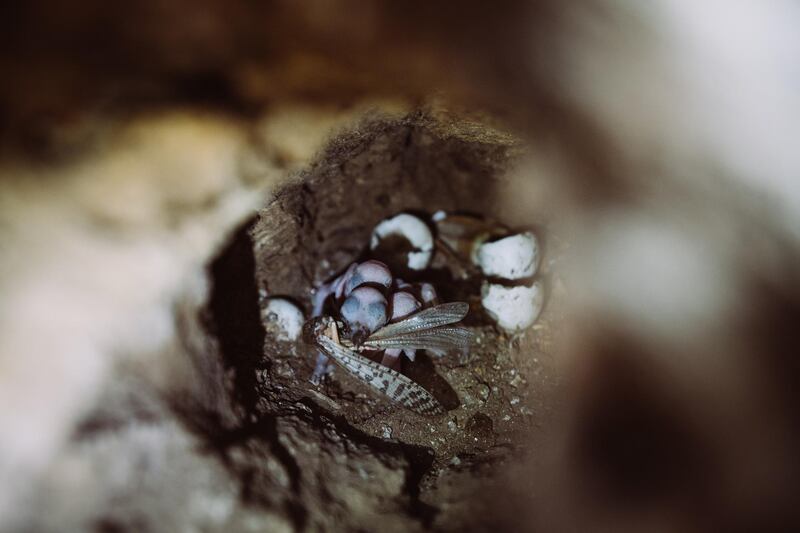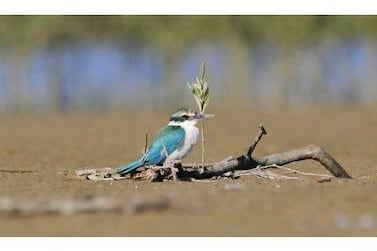The number of a rare bird that lives in a protected part of Sharjah has increased from 125 to 131.
Known as the Arabian collared kingfisher, the bird inhabits the Alqurm area of Kalba on the east coast.
Kingfishers are found in many regions. But the subspecies kalbaensis is found only in Kalba and a handful of sites in Oman.
The increase was noted in a survey that took place during the kingfisher breeding season.
During the season, which runs from April to August, the birds are more territorial and easy to spot.
It was carried out by Sharjah’s Environment and Protected Areas Authority with the help of volunteers.
The EPAA also bred three birds in captivity for the first time from eggs collected during this year’s breeding season. The birds hatched in incubators at the Kalba Bird of Prey Centre.
“The chicks of the Arabian collared kingfisher are being cared for by a dedicated team at Al Hefaiyah Mountain Conservation Centre,” said Hana Al Suwaidi, chairwoman of the EPAA.
The population of the bird is stable but it faces huge threats due to a very limited habitat range. Pollution and development are eroding habitats around the globe.
Alqurm Protected Area in Khor Kalba is believed to host some of oldest mangroves on the Arabian Peninsula. It is an important breeding area for sea turtles, fish and crabs, while the site serves as an important food source for many birds including Arabian collared kingfishers.
Alqurm is also one of the UAE’s 10 “wetlands of international importance”. They are also known as Ramsar sites, after the Iranian city in which the convention on international standards was agreed in 1971. It came into force in the UAE in 2007.
The ability of wetlands to act as giant sponges means they can absorb heavy rain and prevent flooding. As with Abu Dhabi’s Al Wathba Wetland Reserve – another of the 10 sites – they can also be a tourist attraction.
